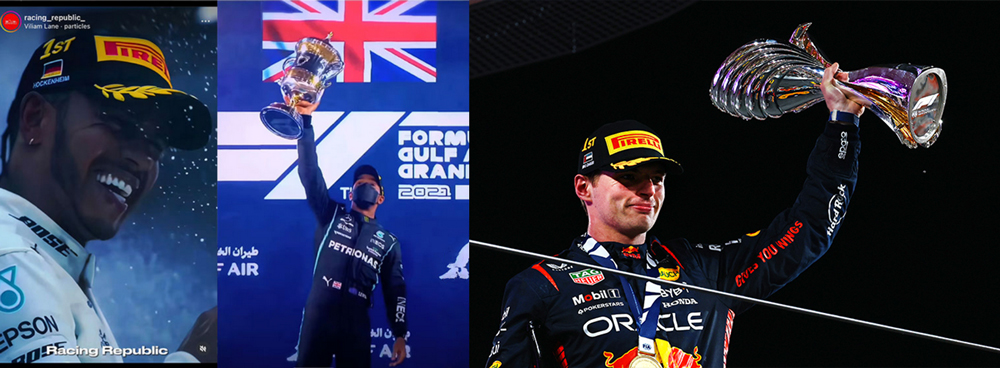Lego builds life-size F1 cars for Miami GP driver parade
Lego Creates Life-Size, Drivable Formula 1 Cars for Miami Grand Prix
MIAMI GARDENS, Fla. — Imagine taking nearly 400,000 Lego bricks and turning them into a life-size Formula 1 car capable of completing a lap at the Miami Grand Prix circuit. This extraordinary vision was brought to life by Lego as part of their partnership with F1, debuting at one of the sport's most celebrated events.
A Bold Vision Turns to Reality
The audacious idea stemmed from a brainstorming session at Lego’s model production factory in Kladno, Czechia, during a visit by senior leadership last year. Julia Goldin, chief product and marketing officer of the Lego Group, explained how the initiative came to be.
“We were talking and brainstorming together, saying, ‘What could we do with F1 that would be completely epic and beyond anything we’ve done before?’” Goldin told reporters at Miami. “And so the team came back and said, ‘Well, what about full-size cars? What about drivable cars?’ It took a while because, of course, it’s a great idea, but can you really make it happen?”
From Toy Models to Functional Vehicles
The ambitious project was executed by senior designer Jonathan Jurion and engineering manager specialist Martin Šmida. Their mission was to reproduce life-size models of Lego's Speed Champions F1 cars, which not only had to look like the products sold in stores but also be functional enough to drive a full 3.3-mile lap at the Miami International Autodrome during the prerace driver parade.
Lego has a long tradition of building life-size models for its parks, but creating drivable versions added a new layer of complexity. The cars required not just the traditional bricks (held together with special construction glue) but also steel-frame chassis, electric drivetrains, hydraulic brakes, and power steering systems. Each model had to fit two F1 drivers, presenting an additional design challenge.
The Incredible Upscaling Process
To achieve this, Jurion scaled down toy-sized Speed Champions Lego F1 cars into detailed life-size constructions. “We started with this little build, trying to remodel it so it fits two minifigures,” Jurion said. “Obviously, a minifigure is not the same proportions as a human, but that was the starting point.”
Upscaling involved laying bricks layer by layer while ensuring all proportions remained accurate. To accommodate two drivers, the cockpit area was creatively elongated. “We actually got inspired by an airplane design for two people, so they are sitting in tandem, one behind the other,” Jurion noted.
Šmida, who spearheaded the cars' mechanical underpinnings, highlighted a nifty feature: adjustable pedals. “Because we don’t know if the driver is smaller or taller, we have movable pedals,” he explained. “These pedals have the possibility to move 10 centimeters back and 10 centimeters forward.”
Unlike consumer Lego kits, this project required unique software to design complex structures. The bricks were mapped layer by layer, allowing builders to assemble components like the nose, engine cover, and halo. The only parts not made of Lego were the wheels and tires, which were provided by F1 tire supplier Pirelli and the teams themselves. Even the steering wheels had outer casings crafted from Lego bricks, complete with realistic switches and dials.
Technical Specs and Innovation
In total, each car weighs 1,500 kg—approximately twice the weight of a real F1 car—with 1,000 kg attributed to the Lego bricks alone. A custom electric motor allows the cars to reach speeds just under 13 mph, mimicking the pace of the flatbed trucks traditionally used for driver parades.
The project demanded extraordinary commitment, with over 3,000 hours of development and 19,000 hours of assembly time spread across 10 cars. After the Miami GP, Lego's life-size cars will embark on a worldwide tour for fans to marvel at. For Goldin and her team, the next challenge is already sparking curiosity.
What’s Next for Lego Creativity?
“That’s the question that everybody is asking,” Goldin said when asked about the future. “One of the things we pride ourselves on is to never let our imagination be constrained by what is considered possible. It’s always: Let’s make the impossible possible. And I’m confident the creativity of our teams will bring another, even more challenging idea to the table.”
For Lego and F1 fans alike, this ambitious collaboration has truly redefined the limits of creativity. What’s next remains to be seen, but if this project is any indication, the possibilities are endless.
Up Next



